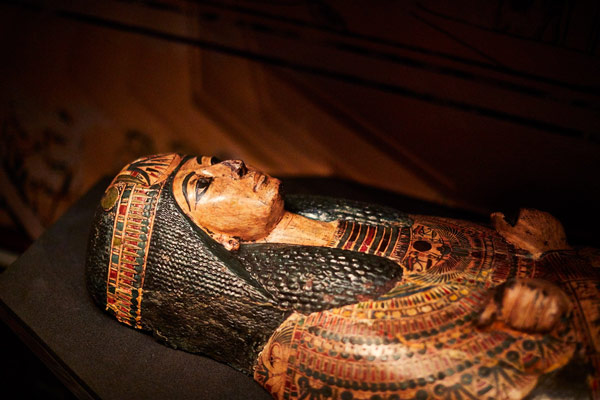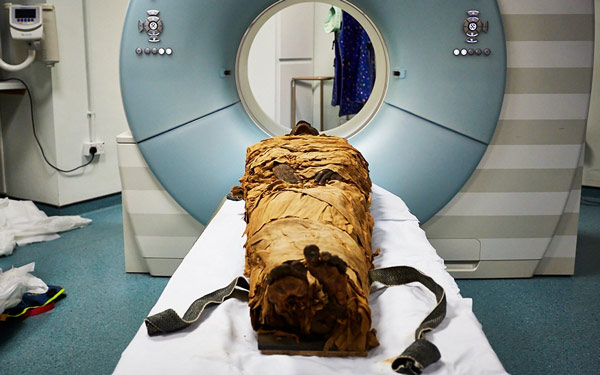We can hear the voice of a 3,000-year-old mummy
The 3,000-year-old mummy of an Egyptian priest has just been studied and recreated successfully by voice at Royal Holloway University (London). The Royal Holloway University study used parameters when measuring the size of the mummy's larynx, thereby calculating and recreating the priest's previous voice.

The mummy of the priest named Nesyamun (based on the inscriptions on the coffin) is said to carry the title of high priest ( waab - High Priest ) living during the reign of pharaoh Ramses XI (1099-1069 BC) Original). This priest worshiped at the Temple of Karnak in Thebes.

Similar to the current missionaries, the voice is a very important part of Nesyamun's daily work, including reciting prayers and singing prayers. Scientists at Leeds General Hospital have measured, calculated and 3D printed the larynx part of the mummy, thereby recreating the voice with the highest match with the real voice of the mummy when alive. The process of research and measurement went through a lot of difficulties because the mummy lost most of its soft tissue, but eventually the scientists succeeded.
According to Joann Fletcher, a professor of archeology who teaches at York University and is also a co-researcher of the project, the priests' desire is to 'continue to evangelize in the afterlife', and to the point of view. The account also clearly states that this is what the priest Nesyamun wanted. Professor Joann Fletcher also said that he will continue his research to recreate short words and then complete sentences to put into the newly created voice.
The study also said that Nesyamun died around the age of 50, with gingivitis and severe tooth decay. The mummy is currently on display at the Leeds City Museum (Yorkshire, England).
- Mummies 2 couples "tell" unbelievable story of death on the ice island
- High winds exposed 2000-year-old mummies in the sand that surprised archaeologists
- Why don't we like to hear our real voice?
- Close up of 800-year-old
- The thousand-year-old cat mummy has 5 legs and 3 tails
- New discovery about 2300-year-old Egyptian mummy
- Study 2,500 year mummy of 14-year-old boy
- Detected 2,200-year-old mummy with obesity caused by eating a lot of sugar
- Successfully decoded 4,000-year-old mummy thanks to DNA technology
- New discovery of mummy Virgin 500 years old
- Inside the mummy, a 2,000-year-old girl
- Terrifying secrets hidden in the 4,000-year-old mummy series
- Discovered a 1,000-year-old Peruvian mummy in a sitting position
- 3,600-year-old mummy in Egypt
 Discovered an ancient centipede fossil 99 million years old
Discovered an ancient centipede fossil 99 million years old Discovered bat-like dinosaurs in China
Discovered bat-like dinosaurs in China Discovered a 200-year-old bronze cannon of the coast
Discovered a 200-year-old bronze cannon of the coast Discover 305 million-year-old spider fossils
Discover 305 million-year-old spider fossils